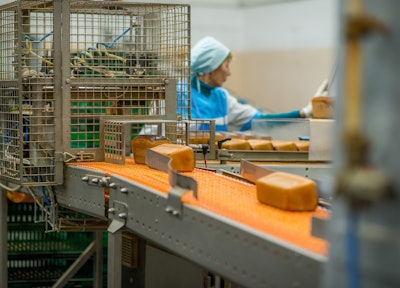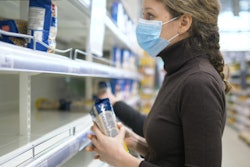
The word “pandemic” crept into our daily vocabulary shortly after the start of 2020. Most companies in the food and beverage supply chain did not see it coming and were not prepared for its impact. Because there was so little known about the Coronavirus disease (COVID-19), it was initially difficult for companies to understand the risks and update their plans to include pandemic controls. Since then, best practices have been developed and can be applied to mitigate threats to employees while supporting business continuity.
Pandemic crisis management
To successfully navigate this unique crisis, it is essential to establish a crisis management team with the necessary backgrounds to develop comprehensive protocols. They will be responsible for the development of a crisis management plan that includes the risks associated with a pandemic. To understand these risks, the team should conduct a risk assessment similar to what is done for HACCP. Instead of focusing solely on food safety, this team should identify who and what will be impacted by the pandemic along with the likelihood and severity for each risk is the starting point. This assessment will determine how each risk will impact your business, products, people, supply chain, operations and customers.
For every likely risk, identify the action items needed to mitigate the impact. Examples include how to manage the supply chain, identify and procure personal protective equipment (PPE) for workforce protection, plan how to run and shut down operations during the pandemic and measure what’s needed to protect the workforce through the use of prescriptive practices.
This written pandemic plan will need to be flexible, so it can evolve as more information becomes available and as you continue navigating through the crisis. After you create the plan, you will need to prepare your team, train workforce and test the plan to make sure it is ready to guide your response.
Supply chain management
Never in recent memory has supply chain management been so challenged as it has this past year. As suppliers have been impacted, manufacturers have also been taxed with keeping the supplies coming in and maintaining production. But, what happens when a single-source ingredient is being imported from a country where all industries were suddenly shut down? It’s no surprise that many operations started buying and even stockpiling materials, such as face masks, gloves, sanitizers and cleaning chemicals in quantities previously never seen. This was akin to what we saw with consumers stockpiling toilet paper. This caused basic supply and demand issues like price gouging, materials shortages, sub-standard products like sanitizer containing methanol reaching the market and other headaches brought on by operating in panic mode.
In the future, you will have to anticipate needs and manage the successful procurement of materials to keep operations properly functioning. Supplier approval protocols must be employed to ensure that all materials brought in are safe for use from a food safety or human safety aspect, as applicable. This should also include the maintenance of alternate sources for raw ingredients, PPE and cleaning chemicals.
Intermittent operations planning management
To meet increased consumer demand, some facilities have been running at 120% or more, committing everything they can to just getting product out the door. Though that may be the priority, it is still critical that even during extended production runs, adequate downtime must be scheduled so required maintenance and sanitation activities can be completed.
Another aspect of intermittent operations is in preparation for the shutdown of a facility. Whether mandated by a government body or to decrease viral transmission among the workforce, you will need to think through key aspects of that process. This includes everything from how to handle raw materials to communicating with employees about what to expect and then actually initiating a shutdown of the facility.
Once you are ready to resume operations, you will need to plan for bringing the facility back online. While leadership and employee communication continue to be important during this stage, planning a start-up sequence and conducting a documented site inspection should also take place.
Health crisis mitigation measures and management
Proactive measures that prioritize employee health and well-being can build confidence in any operation and demonstrate a company’s commitment to safety. Unfortunately, employee complaints to whistleblowers have been on the rise. Maybe those employees were without proper PPE, knew of an employee who was at work while running a fever or believed that worker safety protocols were being compromised due to increased product demand or workforce shortage. Each of those situations resulted in an investigation, placing increased scrutiny and costs on those operations. But, they were unprepared and left themselves and their employees vulnerable. Having a plan in place could have prepared them to identify PPE suppliers and have proper PPE already stocked. They could have had screening measures quickly in place and increased safety protocols to support those workers. Not only is prioritizing health crisis mitigation measures the right thing to do for employees, but it also makes financial sense for your operation.
Pre-requisite program review
In order to meet the changing needs of an operation during a pandemic crisis, it is important to assess current procedures to identify any exceptions to routine practices. This should include a review of protocols for the effective management and support of food safety and employee health. You will need to identify current or necessary exceptions to routine practices and provide additional measures to prevent transmission of viral disease to the workforce yet still maintain food safety.
For instance, new traffic patterns to promote social distancing may allow pathogens to be tracked into production and packaging areas that were previously unaffected. This will necessitate a revision of your environmental monitoring program in those areas to identify and eliminate those risks. Any changes to these and other routine practices will then need to be clearly communicated to all stakeholders. In closing, protecting your workforce and prioritizing food safety through the pandemic starts with the development, implementation and management of a robust plan. It should include best practices for pandemic crisis management, supply chain management, intermittent operations management, health crisis mitigation measures and management and a pre-requisite program review. Such a plan gives you and your management team the opportunity to provide the instructions, assign responsibilities and maintain accountability to mitigate the risks imposed by the current pandemic and future events.




















